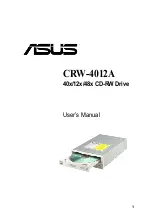
38
| Optidrive ODE-3 User Guide |
Version 2.00
www.invertekdrives.com
9
9.4. Additional Information for UL Compliance
Optidrive E3 is designed to meet the UL requirements. For an up to date list of UL compliant products, please refer to UL listing
NMMS.E226333. In order to ensure full compliance, the following must be fully observed.
Input Power Supply Requirements
Supply Voltage
200 – 240 RMS Volts for 230 Volt rated units, + /- 10% variation allowed. 240 Volt RMS Maximum.
380 – 480 Volts for 400 Volt rated units, + / - 10% variation allowed, Maximum 500 Volts RMS.
Imbalance
Maximum 3% voltage variation between phase – phase voltages allowed.
All Optidrive E3 units have phase imbalance monitoring. A phase imbalance of > 3% will result in the drive tripping. For
input supplies which have supply imbalance greater than 3% (typically the Indian sub-continent & parts of Asia Pacific
including China) Invertek Drives recommends the installation of input line reactors.
Frequency
50 – 60Hz + / - 5% Variation
Short Circuit Capacity
Voltage Rating
Min kW (HP)
Max kW (HP)
Maximum supply
short-circuit current
115V
0.37 (0.5)
1.1 (1.5)
100kA rms (AC)
230V
0.37 (0.5)
11 (15)
100kA rms (AC)
400 / 460V
0.75 (1)
22 (30)
100kA rms (AC)
All the drives in the above table are suitable for use on a circuit capable of delivering not more than the above specified
maximum short-circuit Amperes symmetrical with the specified maximum supply voltage when protected by Class J fuses.
Mechanical Installation Requirements
All Optidrive E3 units are intended for indoor installation within controlled environments which meet the condition limits shown in section 9.1. Environmental.
The drive can be operated within an ambient temperature range as stated in section 9.1. Environmental.
For IP20 units, installation is required in a pollution degree 1 environment.
For IP66 (Nema 4X) units, installation in a pollution degree 2 environment is permissible.
Frame size 4 drives must be mounted in an enclosure in a manner that ensures the drive is protected from 12.7mm (1/2 inch) of deformation of the
enclosure if the enclosure impacted.
Electrical Installation Requirements
Incoming power supply connection must be according to section 4.3. Incoming Power Connection.
Suitable Power and motor cables should be selected according to the data shown in section 9.2. Rating Tables and the National Electrical Code
or other applicable local codes.
Motor Cable
75°C Copper must be used.
Power cable connections and tightening torques are shown in sections 3.3. Mechanical Dimensions and Mounting – IP20 Open Units and 3.5.
Mechanical Dimensions – IP66 (Nema 4X) Enclosed Units.
Integral Solid Sate short circuit protection does not provide branch circuit protection. Branch circuit protection must be provided in accordance
with the national electrical code and any additional local codes. Ratings are shown in section 9.2. Rating Tables
Transient surge suppression must be installed on the line side of this equipment and shall be rated 480Volt (phase to ground), 480 Volt (phase to
phase), suitable for over voltage category iii and shall provide protection for a rated impulse withstand voltage peak of 4kV.
UL Listed ring terminals / lugs must be used for all bus bar and grounding connections.
General Requirements
Optidrive E3 provides motor overload protection in accordance with the National Electrical Code (US).
• Where a motor thermistor is not fitted, or not utilised, Thermal Overload Memory Retention must be enabled by setting P-50 = 1.
• Where a motor thermistor is fitted and connected to the drive, connection must be carried out according to the information shown in section
4.9.2. Motor Thermistor Connection.
9.5. EMC Filter Disconnect
Drives with an EMC filter have an inherently higher leakage current to Ground (Earth).
For applications where tripping occurs the EMC filter can be disconnected (on IP20 units only)
by completely removing the EMC screw on the side of the product.
Remove the screw as indicated right.
The Optidrive product range has input supply voltage surge suppression components fitted
to protect the drive from line voltage transients, typically originating from lightning strikes or
switching of high power equipment on the same supply.
When carrying out a HiPot (Flash) test on an installation in which the drive is built, the
voltage surge suppression components may cause the test to fail. To accommodate this
type of system HiPot test, the voltage surge suppression components can be disconnected by
removing the VAR screw After completing the HiPot test, the screw should be replaced and
the HiPot test repeated. The test should then fail, indicating that the voltage surge suppression
components are once again in circuit.
Technical Data



































